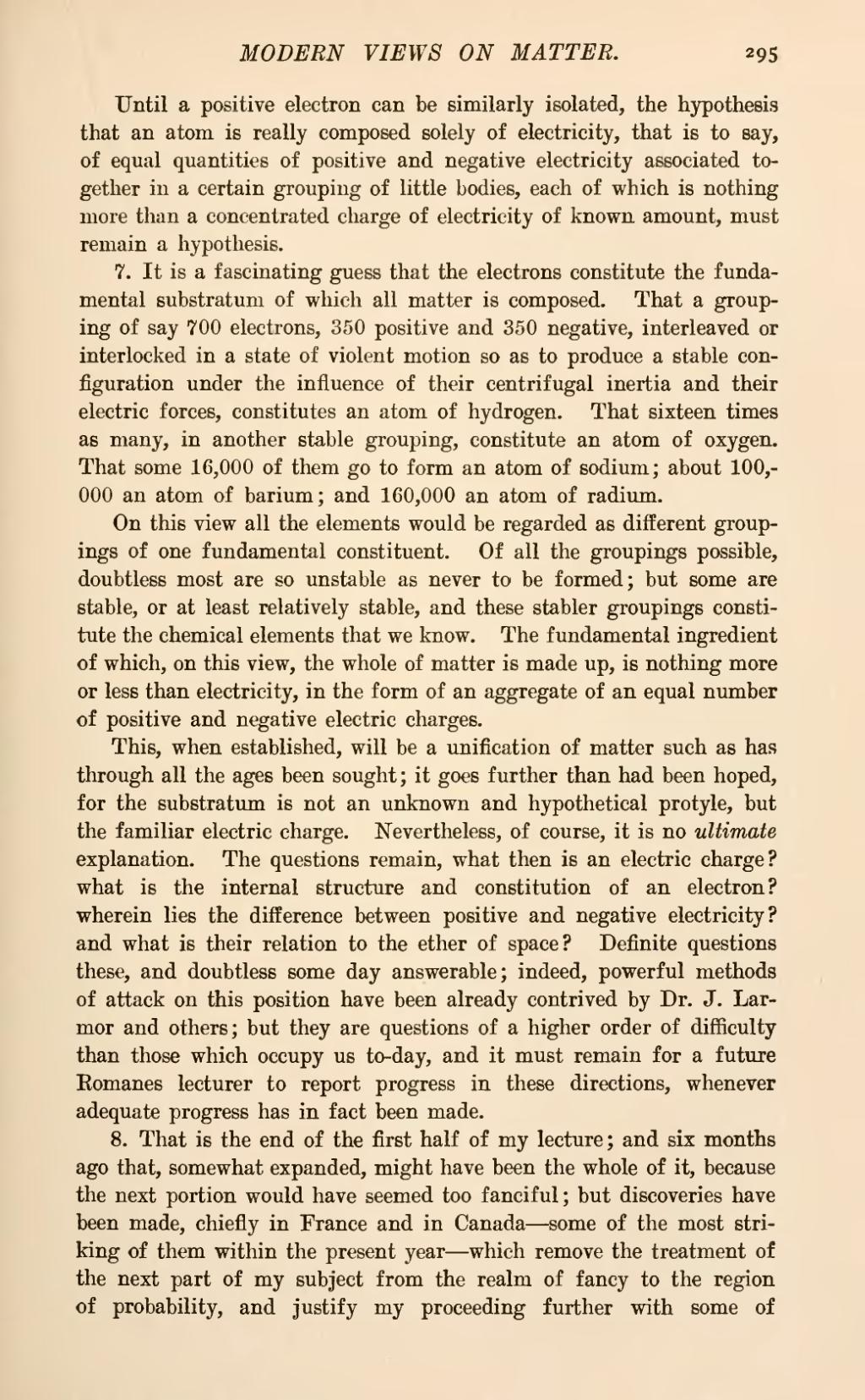Until a positive electron can be similarly isolated, the hypothesis that an atom is really composed solely of electricity, that is to say, of equal quantities of positive and negative electricity associated together in a certain grouping of little bodies, each of which is nothing more than a concentrated charge of electricity of known amount, must remain a hypothesis.
7. It is a fascinating guess that the electrons constitute the fundamental substratum of which all matter is composed. That a grouping of say 700 electrons, 350 positive and 350 negative, interleaved or interlocked in a state of violent motion so as to produce a stable configuration under the influence of their centrifugal inertia and their electric forces, constitutes an atom of hydrogen. That sixteen times as many, in another stable grouping, constitute an atom of oxygen. That some 16,000 of them go to form an atom of sodium; about 100,000 an atom of barium; and 160,000 an atom of radium.
On this view all the elements would be regarded as different groupings of one fundamental constituent. Of all the groupings possible, doubtless most are so unstable as never to be formed; but some are stable, or at least relatively stable, and these stabler groupings constitute the chemical elements that we know. The fundamental ingredient of which, on this view, the whole of matter is made up, is nothing more or less than electricity, in the form of an aggregate of an equal number of positive and negative electric charges.
This, when established, will be a unification of matter such as has through all the ages been sought; it goes further than had been hoped, for the substratum is not an unknown and hypothetical protyle, but the familiar electric charge. Nevertheless, of course, it is no ultimate explanation. The questions remain, what then is an electric charge? what is the internal structure and constitution of an electron? wherein lies the difference between positive and negative electricity? and what is their relation to the ether of space? Definite questions these, and doubtless some day answerable; indeed, powerful methods of attack on this position have been already contrived by Dr. J. Larmor and others; but they are questions of a higher order of difficulty than those which occupy us to-day, and it must remain for a future Romanes lecturer to report progress in these directions, whenever adequate progress has in fact been made.
8. That is the end of the first half of my lecture; and six months ago that, somewhat expanded, might have been the whole of it, because the next portion would have seemed too fanciful; but discoveries have been made, chiefly in France and in Canada—some of the most striking of them within the present year—which remove the treatment of the next part of my subject from the realm of fancy to the region of probability, and justify my proceeding further with some of

